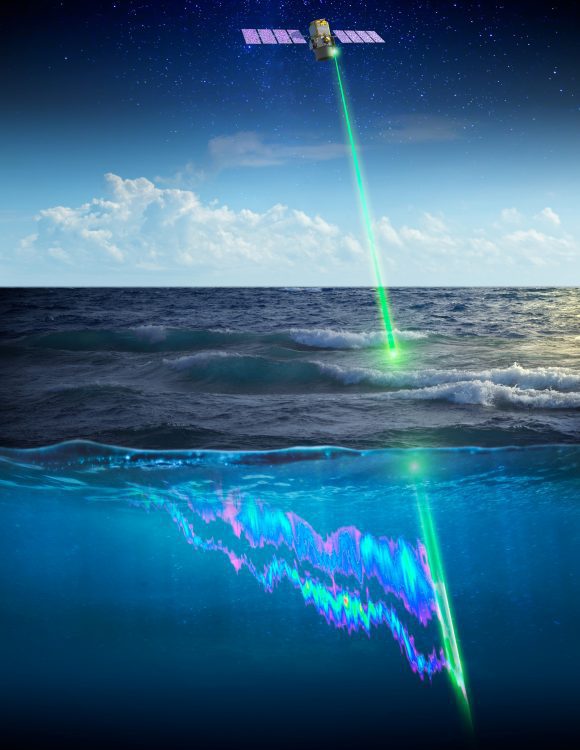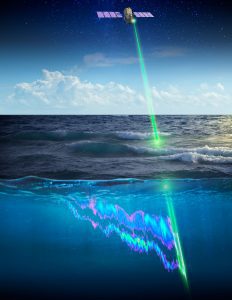

NASA’s CALIOP instrument uses a laser to take measurements of polar plankton. (Credit: NASA/Timothy Marvel)
A new study using a NASA satellite instrument orbiting Earth found that small, environmental changes in polar food webs significantly influence the boom-and-bust cycles of phytoplankton. These findings, recently published in Nature Geoscience, will supply important data for ecosystem management, commercial fisheries and understanding of the interactions among Earth’s climate and key ocean ecosystems.
“It’s really important for us to understand what controls these boom-and-bust cycles, and how they might change in the future, so we can better evaluate the implications on all other parts of the food web,” said Michael Behrenfeld, a marine plankton expert at Oregon State University in Corvallis.
The new study shows that accelerations in growth rate cause blooms by allowing phytoplankton to outgrow the animals that prey on them. When this happens, the phytoplankton populations rapidly increase. However, as soon as that acceleration in growth stops, the predatory animals catch up by eating the ocean plants, and the bloom ends.
NASA’s Cloud-Aerosol LIdar with Orthogonal Polarization (CALIOP), an instrument aboard the Cloud-Aerosol Lidar and Infrared Pathfinder Satellite Observation (CALIPSO) satellite launched in 2006, uses a laser to take measurements. Scientists used the instrument to continuously monitor plankton in polar regions from 2006 to 2015. The lidar can illuminate and measure the plankton day or night, in between clouds, and even through some clouds.
“CALIOP was a game-changer in our thinking about ocean remote sensing from space,” said Chris Hostetler, a research scientist at Langley. “We were able to study the workings of the high-latitude ocean ecosystem during times of year when we were previously completely blind.”